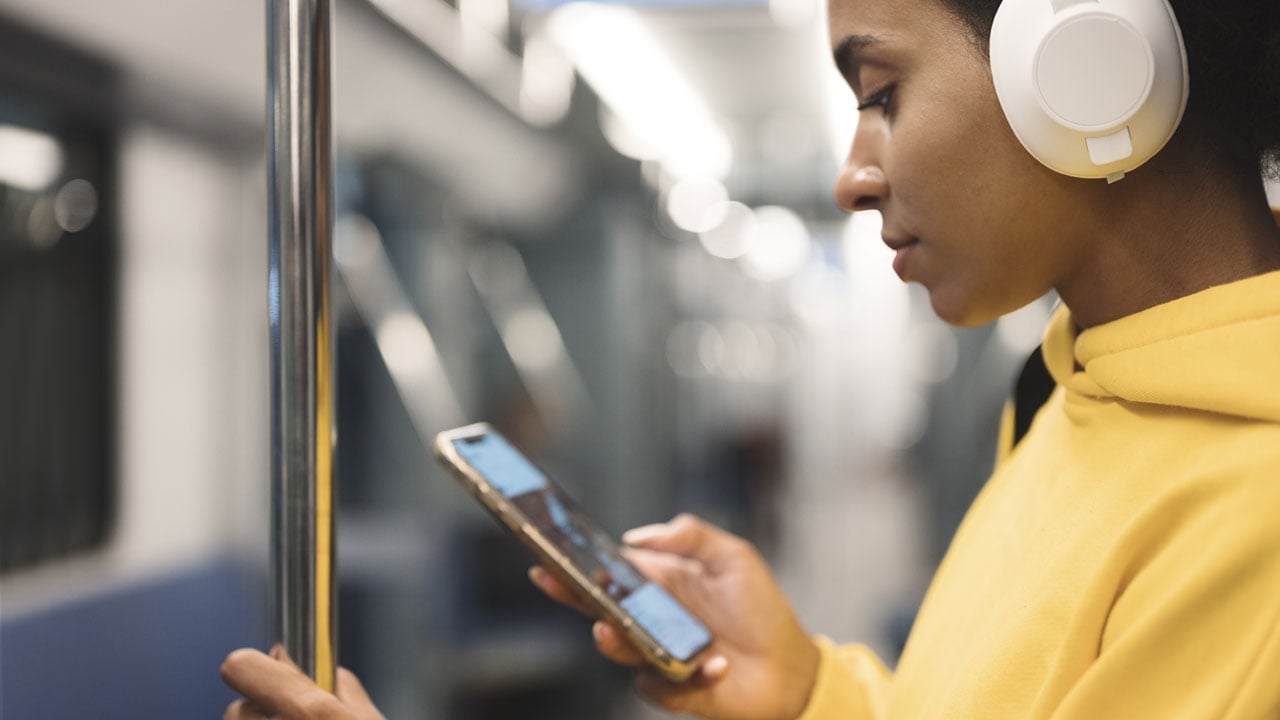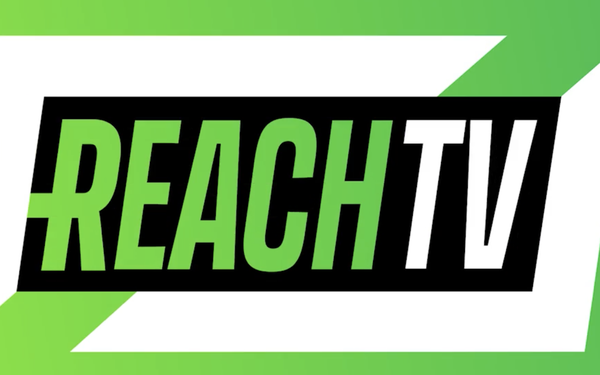By Calvin Scharffs
Note: The following interview is part of the Orange 142 Emerging Channels Council initiative, which we launched to help SMB understand and adopt new and innovative advertising channels. As part of this effort, we’ve asked Orange 142 experts to share their insights on new opportunities, strategies, and challenges in the digital advertising landscape. This interview is one of many resources created by the Council. Be sure to download the Best Practices Guide linked at the end for actionable advice tailored to emerging channels.
Marketers know the best way to engage consumers is to meet them where they are, and increasingly, they’re tuning in to digital audio. Whether it’s a favorite podcast during a morning commute, streaming music while working out, or a curated playlist playing in the background while cooking dinner, digital audio has become the soundtrack of modern life. The amount of time spent listening to digital audio increases each year, and for good reason: it’s convenient, the sound is of the highest quality, and because it stems from a personal device, listeners have ample ways to allow the listener to personalize the experience.
For advertisers, this personalization extends to the ads listeners hear, giving brands a unique opportunity to craft relevant, meaningful messages tailored to individual preferences. By leveraging data on listener behaviors, interests, and habits, digital audio creates a platform where advertising feels less like an interruption and more like an engaging part of the listening experience. To learn more, I spoke with Orange 142’s Senior Vice President of Business Development, Lindsey Wilkes, on ways that brands can build relationships with audiences in moments that matter.
CS: When we talk about digital audio advertising, what exactly does that include?
LW. Digital audio includes a variety of formats, including streaming radio, podcasts, and even programmatic inventory from platforms like Spotify and iHeartRadio.
I should point out that podcasts are a unique category, especially when you’re dealing with host-read ads, which are often arranged directly with podcast creators. In those instances, podcasts are closer to influencer marketing, where the brand partners with a host that has a similar audience to the one they want to reach.
CS: Are there particular industries or types of brands that you think should be investing more in digital audio?
LW: Honestly, digital audio works well for almost any brand because of its broad targeting capabilities. That said, it’s particularly well-suited for industries like higher education, where the audience might spend a lot of time streaming content on their devices. For example, we’ve worked with colleges that pair direct mail campaigns with digital audio to target the same households across multiple channels. It’s a great way to increase awareness while reinforcing the message through repetition.
CS: How does the cost of digital audio compare to other advertising channels, and what makes it accessible to a wide range of advertisers?
LW: Digital audio is incredibly cost-effective, especially when you compare it to channels like Connected TV, which tends to have higher CPMs. With digital audio, brands can achieve meaningful reach without needing a massive budget, making it accessible for businesses of all sizes.
What’s more, because digital audio is consumed on personal devices like phones or tablets, advertisers can measure engagement and retarget users more effectively than with traditional radio or other high-reach channels. This means even smaller budgets can be optimized for better ROI. Ultimately, digital audio offers an affordable entry point for brands looking to balance awareness and performance in their campaigns.
CS: How do streaming platforms like Spotify and iHeartRadio compare to podcast advertising in terms of what they offer to brands?
LW: That’s a great question. Each platform has unique advantages depending on a brand's goals. For example, streaming services such Spotify and iHeartRadio offer vast reach and advanced targeting capabilities, letting advertisers reach listeners by genre, mood, or even activity.
On the other hand, podcasts can deliver a more personal touch. Podcast listeners tend to be highly engaged, and host-read ads often feel like a trusted recommendation, which is great for building credibility and driving conversions. The choice really depends on whether you're prioritizing scale, precision, or a personal connection with your audience.
CS: What’s the difference between running a pre-recorded ad on a streaming platform versus advertising on a podcast? Are there situations where one works better than the other?
LW: It really depends on the campaign’s goals. Streaming ads tend to be more standardized and scalable, while podcast ads -- especially host-read ones -- often feel more personal and trusted because they’re delivered by someone the audience already knows and respects. Both formats have their advantages, and they can work together as part of a broader strategy.
CS: What makes digital audio a unique channel compared to other forms of advertising?
LW: What really sets digital audio apart is the ability to connect with users in highly personal and often uninterrupted moments—like during commutes, workouts, or while they’re relaxing at home. Pairing this with retargeting capabilities, where you follow up with display ads or promotions on other devices, makes digital audio a versatile channel for both awareness and performance campaigns. It’s a great way to reach audiences in a way that feels natural and engaging, without being overly intrusive.
CS: How does digital audio targeting compare to what brands can do in other advertising channels?
LW: One of the biggest strengths of digital audio is its targeting precision. You’re typically reaching people on their personal devices, like phones or tablets, which means you can target based on the listeners interests, demographics, and location. If you’re targeting music listeners, you can focus on specific genres -- for example, folk music versus hip-hop. For podcasts, you can target by category, such as finance or true crime, to reach people who are highly engaged with specific topics.
Additionally, first-party data from platforms like Spotify and iHeartRadio can be leveraged for targeting. These platforms collect user preferences, behaviors, and interests, which advertisers can use to create highly specific audience segments.
We can also create companion campaigns. If someone hears an ad on Spotify, we can follow up with a display ad on their mobile device or desktop, creating a multi-touchpoint strategy that reinforces the message.
CS: How does digital audio fit into a multi-channel advertising strategy?
LW: It fits into multi-channel advertising strategies because digital audio drives both brand awareness and performance goals. The strength of digital audio lies in its ability to reach users during personal, focused moments -- whether they’re listening to a podcast during a commute or streaming music while working out. This level of engagement makes it a powerful top-of-funnel channel for building awareness.
But it doesn’t stop there. Like CTV, digital audio works exceptionally well alongside other channels, including display, video, or social media. By retargeting listeners with follow-up ads on their mobile devices or desktops, you can guide them down the funnel and reinforce your message at multiple touchpoints. It’s a versatile channel that bridges the gap between reaching broad audiences and delivering measurable, actionable results.
CS: But unlike CTV, it’s a lot easier for a consumer to respond to an ad that piques their interest if they’re listening on their mobile device than it is if they see one on their smart TV.
LW: That’s right. Digital audio has the advantage of being tied to personal devices like smartphones or tablets, which are inherently interactive. If a listener hears an ad that resonates with them, it’s much easier to take immediate action—whether it’s clicking a link, visiting a website, or saving a promo code. This makes digital audio a powerful channel not just for raising awareness, but also for driving direct engagement and conversions.
And even if listeners don’t take action right away, the ability to retarget them later with display ads on the same device reinforces the message and guides them further down the funnel. It’s this blend of awareness and performance that makes digital audio such a unique and effective tool for marketers.
CS: What metrics do you typically look at to gauge the success of a digital audio campaign?
LW: The key metrics for digital audio campaigns often depend on the campaign goals, but some of the most important ones include completion rates, engagement, and retargeting performance. For example, completion rates for digital audio ads are typically high -- often over 90% -- because listeners are engaged and less likely to skip the ads while they’re driving, working out, or doing other activities.
We also look at engagement metrics like clicks and conversions, especially when a campaign is paired with companion ads on display or social platforms. This approach lets us track how many people took action after hearing an ad. And because digital audio is often consumed on personal devices, we can measure retargeting success, such as CTR or conversion rates, for follow-up campaigns. It’s all about combining awareness and performance to get the most out of the channel.
CS: What would you say to a brand that’s hesitant about investing in digital audio?
LW: Digital audio is one of the most versatile and accessible advertising channels available today. It offers brands the unique ability to connect with audiences during personal, uninterrupted moments. That’s an ideal scenario, in my opinion.
Want to learn how this can work for you? Orange 142 helps SMBs navigate and maximize emerging advertising channels with strategic guidance and best practices. Let’s connect to explore the right approach for your goals.
About the Orange 142 Emerging Channels Council
The Emerging Channels Council serves as a thought leadership body within Orange 142, focusing on educating, guiding, and encouraging independent brands and agencies to experiment and excel in underutilized and innovative channels. Through collaboration, data-driven insights, and practical resources, the council will help Orange 142 clients obtain strategic growth through sustainable practices in digital advertising.
To access all of the Emerging Channels Council resources, please visit: https://orange142.com/emerging-channels-hub





